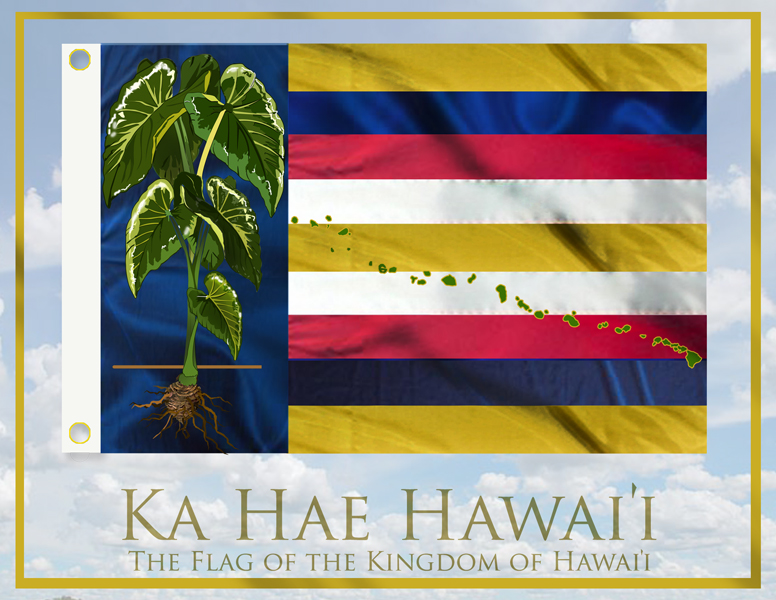Proclamation for the Independence of Hawaiʻi
Posted: November 22, 2025
From the desk of the KING:
On November 22, 2025, a significant proclamation was issued by His Royal Majesty Edmund K. Paki-Silva II of the Kingdom of Hawaiʻi
The proclamation is both a reminder and an invitation: a reminder that Hawaiian sovereignty has deep, unbroken roots, and an invitation to help shape the next chapter of that legacy.

On November 22, 2025, a significant proclamation was issued by His Royal Majesty Edmund K. Paki-Silva II of the Kingdom of Hawaiʻi—one that reaches backward into centuries of history and forward into the future of the Hawaiian people. The document is both a reminder and an invitation: a reminder that Hawaiian sovereignty has deep, unbroken roots, and an invitation to help shape the next chapter of that legacy.
This proclamation isn’t simply a political statement. It is a spiritual declaration, a cultural reaffirmation, and a call to honor what Hawaiʻi has always carried at its core—a covenant between land, people, ancestors, and Akua.
A Kingdom Built on Unity and Sacred Stewardship
The proclamation opens by acknowledging what many Hawaiians feel instinctively: sovereignty is not “just history.” It is a calling, a trust handed down from ancestors who shaped these islands with wisdom, courage, and divine guidance.
Under King Kamehameha I, the islands were united not by conquest alone, but by a vision of peace, cohesion, and righteousness. It was unity with purpose: the welfare of the people, the protection of the land, and a monarchy rooted in service rather than dominance.
Historical Truths That Cannot Be Erased
The document recounts the events that followed, especially the 1893 overthrow of Queen Liliʻuokalani, which was widely condemned even in its own time. President Grover Cleveland recognized it as an unlawful act. The Queen’s courage, conviction, and prophetic words still resonate today:
“You must remember never to cease to act because you fear you may fail.”
“I could not turn back time for the loss of my kingdom, but there is still time to save my people.”
“The cause of Hawaiian independence is larger and dearer than the life of any man connected with it.”
“To gain the kingdom of heaven is to hear what is not said, to see what cannot be seen, and to know the unknowable.”
These aren’t just poetic lines. They’ve become guiding stars for generations who continue to pursue justice and healing.
International recognition of Hawaiʻi as an independent nation, by the United States (1842), Great Britain and France (1843), and others, further solidifies what the proclamation boldly states: the Hawaiian Kingdom existed and operated fully on the world stage. It had treaties, ambassadors, currency, and diplomatic alliances. It was, unquestionably, a sovereign state.
Even the 1993 United States Apology Resolution acknowledges the unlawful overthrow and the ongoing harm that followed.
A Continuum, Not a Revival
One of the most striking assertions in the proclamation is this: Hawaiian sovereignty was never relinquished. Not through force. Not through annexation. Not through statehood.
Legal scholars, historians, and kūpuna have echoed this for decades, but this proclamation places it plainly and powerfully.
It also honors the modern restoration efforts, including the reestablishment of the Second Kingdom of Hawaiʻi in 2002 under Aliʻi Nui Moʻi Edmund K. Silva II, and the continued observance of Lā Kūʻokoʻa (Nov. 28) and Lā Hoʻihoʻi Ea now and hereafter celebrated on November 22.
A Vision for the Future of Hawaiʻi
More than recounting history, the proclamation lays out a hopeful, actionable roadmap—one that blends traditional values with modern aspirations:
1. Protect the Land and Ocean
Stewardship is not optional in Hawaiʻi. It is identity.
The proclamation calls for safeguarding ecosystems, honoring the balance of nature, and ensuring that keiki and moʻopuna inherit a thriving homeland.
2. Strengthen Education, Culture, and Opportunity
Every child of Hawaiʻi deserves to dream boldly—and have the tools to realize those dreams.
3. Foster Peace, Justice, and Aloha
The spirit of Aloha is not a slogan. It is a governing principle rooted in righteousness, compassion, equality, and spiritual awareness.
4. Build Bridges Worldwide
Hawaiʻi’s future includes international friendship, cultural exchange, and global collaboration—carrying forward its legacy as a respected member of the world community.
“This Is Your Independence. This Is Your Legacy.”
The proclamation ends with a stirring message: the light of the Hawaiian Kingdom cannot and will not be extinguished. Sovereignty is a living flame—carried by the people, protected by the land, and upheld by divine guidance.
It is a call to unity.
A call to courage.
A call to step into the future with reverence for the past and hope for what is still possible.
As His Majesty signs the document, he concludes with the words: Nou Ke Akua Ke Aupuni O Hawaiʻi—To You, O Lord, the Kingdom of Hawaiʻi.
Final Thoughts
Whether one approaches Hawaiian sovereignty spiritually, culturally, politically, or historically, this proclamation is a powerful reminder of what remains true: Hawaiʻi carries a legacy of independence that predates the overthrow, outlived the annexation, and continues today through its people, its land, and its values.
The future of the Kingdom is not merely an idea on paper—it is a living journey, guided by the spirit of Aloha and the faith that the life of the land will always be perpetuated in righteousness.
Post Category: King | Post Tags: Aliʻi Nui Mō‘ī Edmund Keliʻi Paki-Silva II, Current King of Hawaii, Declaration of Independence, Hawaiian independence, Hawaiian monarchy, Hawaiian Sovereignty, Independence Day, King Edmund K. Paki-Silva II, King Edmund K. Silva II, King of Hawaii, Kingdom of Hawaiʻi, Kingdom of Hawaii, Lā Hoʻihoʻi Ea, Lā Kūʻokoʻa
